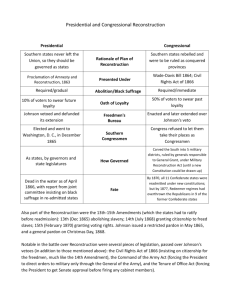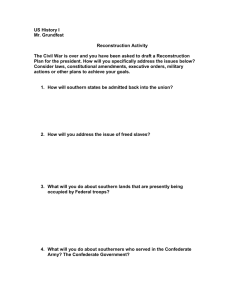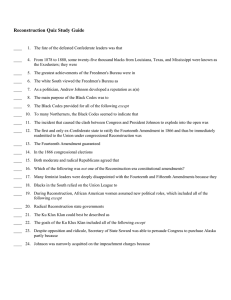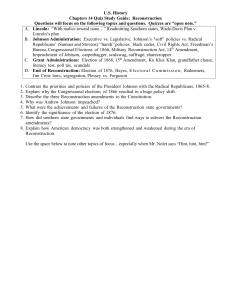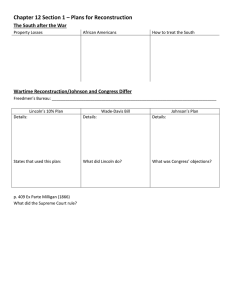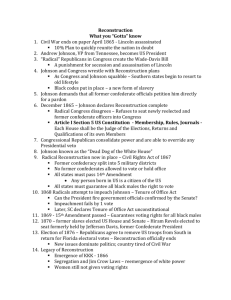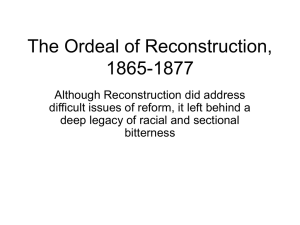Presidential and Congressional Reconstruction
advertisement
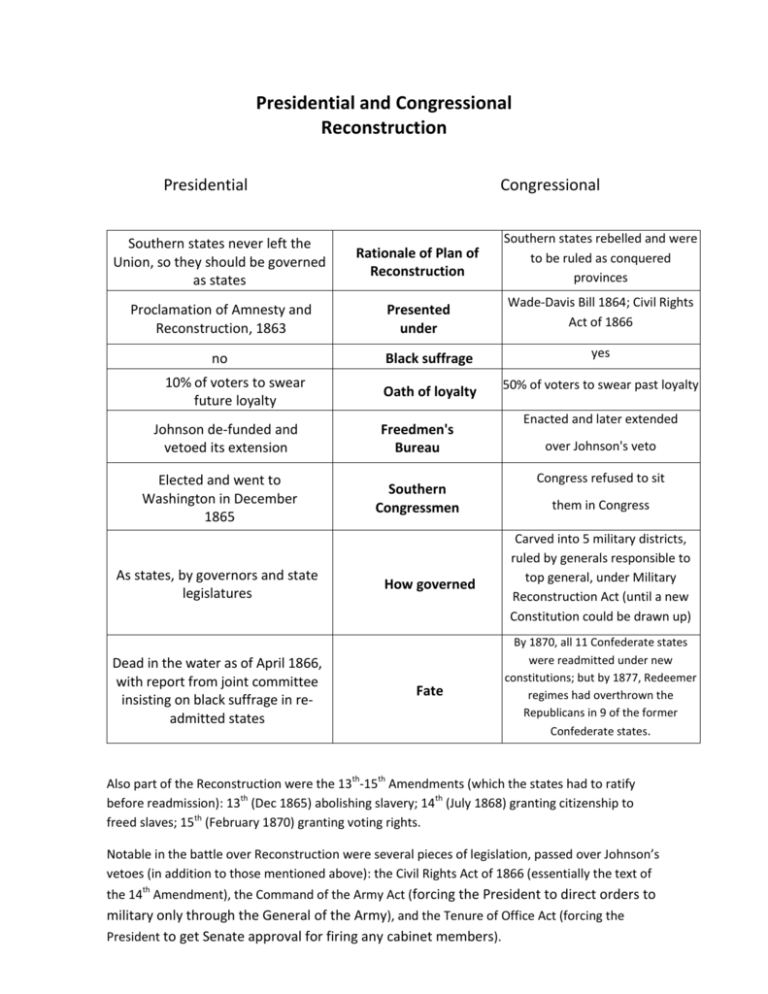
Presidential and Congressional Reconstruction Presidential Congressional Southern states never left the Union, so they should be governed as states Rationale of Plan of Reconstruction Southern states rebelled and were to be ruled as conquered provinces Proclamation of Amnesty and Reconstruction, 1863 Presented under Wade-Davis Bill 1864; Civil Rights Act of 1866 no 10% of voters to swear future loyalty Johnson de-funded and vetoed its extension Elected and went to Washington in December 1865 As states, by governors and state legislatures Dead in the water as of April 1866, with report from joint committee insisting on black suffrage in readmitted states Black suffrage yes Oath of loyalty 50% of voters to swear past loyalty Freedmen's Bureau Southern Congressmen How governed Fate Enacted and later extended over Johnson's veto Congress refused to sit them in Congress Carved into 5 military districts, ruled by generals responsible to top general, under Military Reconstruction Act (until a new Constitution could be drawn up) By 1870, all 11 Confederate states were readmitted under new constitutions; but by 1877, Redeemer regimes had overthrown the Republicans in 9 of the former Confederate states. Also part of the Reconstruction were the 13th-15th Amendments (which the states had to ratify before readmission): 13th (Dec 1865) abolishing slavery; 14th (July 1868) granting citizenship to freed slaves; 15th (February 1870) granting voting rights. Notable in the battle over Reconstruction were several pieces of legislation, passed over Johnson’s vetoes (in addition to those mentioned above): the Civil Rights Act of 1866 (essentially the text of the 14th Amendment), the Command of the Army Act (forcing the President to direct orders to military only through the General of the Army), and the Tenure of Office Act (forcing the President to get Senate approval for firing any cabinet members).
